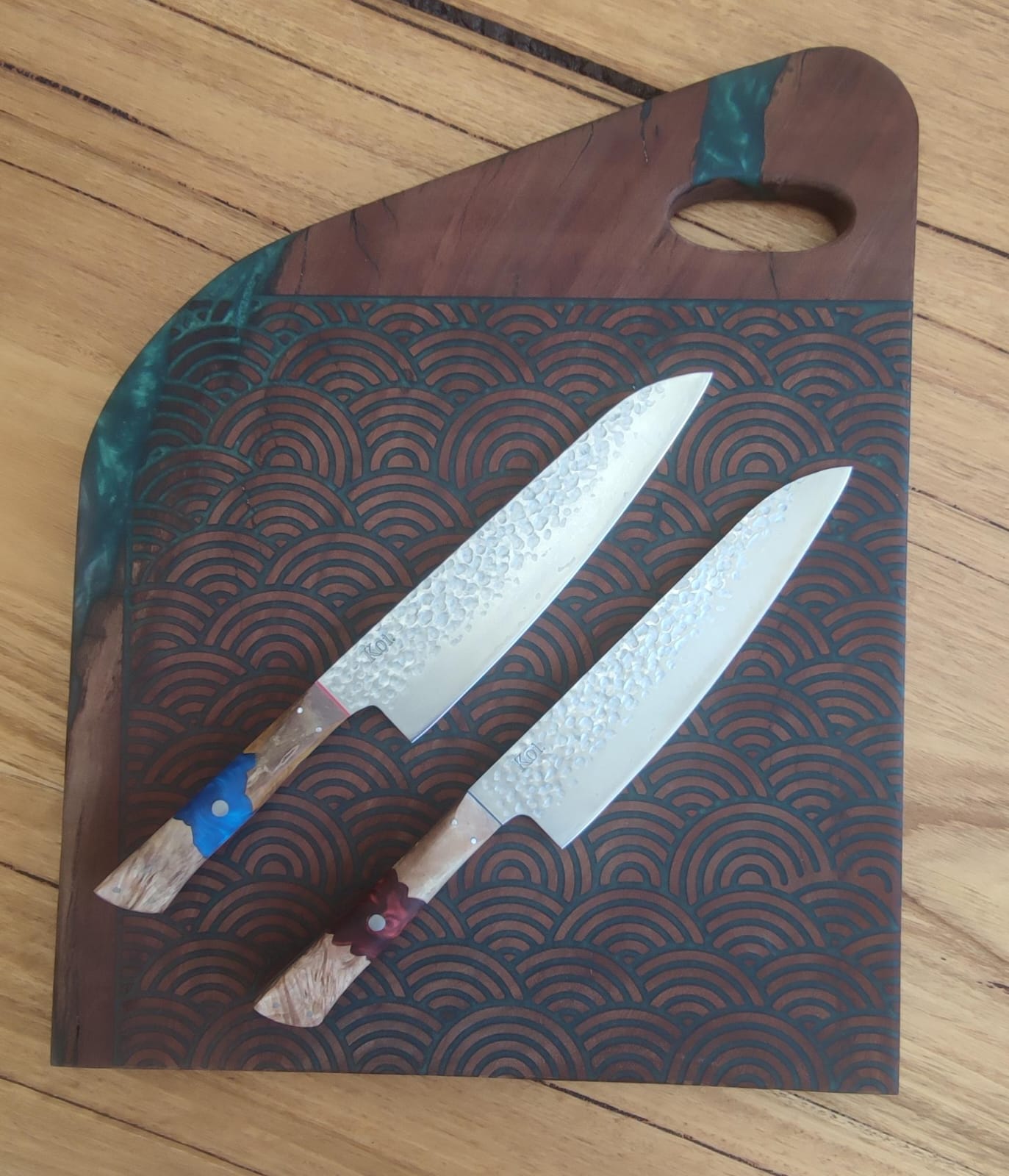In a world where culinary curiosity and adventure are key, maintaining the sharpness and performance of your knives becomes critical, even while travelling. Maintaining blade precision while visiting various locations is a skill worth learning.
Your knives can be your loyal companions in everything from Bangkok's hectic marketplaces to Tuscany's peaceful kitchens.
This post will give useful tips for keeping your blades sharp when travelling.
From essential techniques to practical advice, this comprehensive resource will empower you to be a true "Knife Whisperer" on your culinary expeditions.
The Essentials of Knife Maintenance
Proper knife maintenance is essential, especially when you're travelling.
Here are the basics of keeping your blade in top-notch condition.
Understanding the Basics of Knife Sharpening
Before you embark on your culinary journey, grasp the difference between honing and sharpening. Honing realigns the blade's edge while sharpening involves removing material to create a new edge. Knowing when to use each method is crucial.
Essential Tools for Knife Maintenance While Traveling
Travel-friendly knife maintenance tools are compact and efficient. Consider carrying a honing rod for quick touch-ups and a portable sharpening stone for more extensive sharpening. These tools can easily fit into your travel kit.
Safety Precautions When Handling Sharpening Tools
When using sharpening tools, ensure you have a stable surface to work on. Be mindful of your fingers, as sharpening stones can be unforgiving. Maintain a consistent angle to avoid uneven sharpening.
Practical Tips for Maintaining Sharpness
Honing vs Sharpening: Knowing When to Use Each Method
Honing and sharpening are two distinct techniques, and understanding when to use each is crucial.
Honing, often confused with sharpening, is primarily used for maintenance. It doesn't remove metal but rather straightens the blade's edge. Carry a honing rod in your travel kit for quick touch-ups between proper sharpening sessions.
On the other hand, sharpening involves removing material to create a new edge. This should be done less frequently than honing. Pack a compact sharpening tool like a pull-through sharpener or a whetstone for more in-depth sharpening when needed.
Techniques for Honing Your Knife on the Go
When honing your knife while travelling, here's a step-by-step guide to ensure your blade remains sharp:
- Proper Grip: Hold the honing rod firmly in one hand and the knife in the other.
- Angle Matters: Maintain a consistent angle, usually 15-20 degrees, between the rod and the knife's edge.
- Smooth Strokes: Glide the knife down the rod in a sweeping, curved motion from the base to the tip.
- Even Pressure: Apply light and even pressure while honing.
Step-by-Step Guide to Sharpening Your Knife During Travel
Sharpening on the go can seem daunting, but it becomes second nature with practice. Here's a step-by-step guide:
- Secure Your Knife: Find a stable surface for sharpening. A table or countertop works well.
- Angle Alignment: Maintain the correct sharpening angle, usually 15-20 degrees.
- Start Coarse: Start with coarse grit and move to finer grits for a polished edge.
- Consistent Strokes: Use smooth, consistent strokes along the blade, ensuring even material removal.
- Regular Checks: Periodically check the sharpness by slicing through paper or food items.
- Hone for Precision: Use a honing rod to refine the edge and remove any burrs after sharpening.
Tips for Choosing the Right Sharpening Angle
Selecting the correct sharpening angle depends on your knife's purpose and the manufacturer's recommendations. A narrower angle (15 degrees) is ideal for delicate slicing tasks, while a wider angle (20 degrees) suits more robust cutting.
Caring for Your Knife During Travel
When caring for your knife during culinary adventures away from home, there are several key considerations to remember. Maintaining your knife while travelling ensures it remains sharp, safe, and ready for action.
* Storage Solutions: Invest in a quality knife sheath or blade guard designed for travel. These protective covers keep the blade secure and minimise the risk of accidents in your luggage. Alternatively, consider using a knife roll or magnetic knife strip for protection and organisation.
* Protection during Transit: Secure your knives to prevent movement and potential damage when packing them. Use blade guards and consider placing your utensils in a separate pouch or section of your luggage to avoid contact with other items.
* Cleaning and Drying: After each use, thoroughly cleaning and drying your knife is crucial. Travel-friendly knife cleaning kits are available and include small brushes and cloths. Make it a habit to clean your knife immediately after use to prevent food residue from drying onto the blade.
* Oil Application: Applying a light coat of food-grade mineral oil to your knife's blade can help prevent rust, especially in humid or coastal areas. Ensure the edge is completely dry before applying the oil.
Mastering the Art of Sharpness on Your Culinary Adventures
As you embark on your culinary adventures, armed with the knowledge of knife maintenance, you're not just ensuring your blades stay sharp but elevating your entire gastronomic experience. Seasoned travellers can attest to a well-maintained knife's profound impact on your journey.
Sharper Knives, Brighter Experiences
- Stories from the Road: Travelers worldwide have shared their culinary escapades enhanced by the keen edge of a well-maintained knife. Whether slicing through fresh local produce or expertly filleting a catch of the day, a sharp blade elevates the dining experience.
Prioritising Knife Maintenance
- Travel Wisdom: In culinary travel, prioritising knife maintenance isn't just a chore; it's a mindset. It ensures you're always ready to take on any culinary challenge your journey throws.
Conclusion
Incorporating these practices into your travel routine will allow you to maintain your knives' sharpness and remain pristine throughout your culinary excursions.
You can become a true "Knife Whisperer" by employing practical sharpening techniques, caring for your knife while travelling and learning from seasoned travellers.
Remember that a well-maintained knife enhances your cookery experiences and demonstrates your commitment to the culinary arts. With these insights and techniques in mind, you can confidently embark on your next journey, knowing that you will always be able to experience the precision and effectiveness of a sharp blade.




